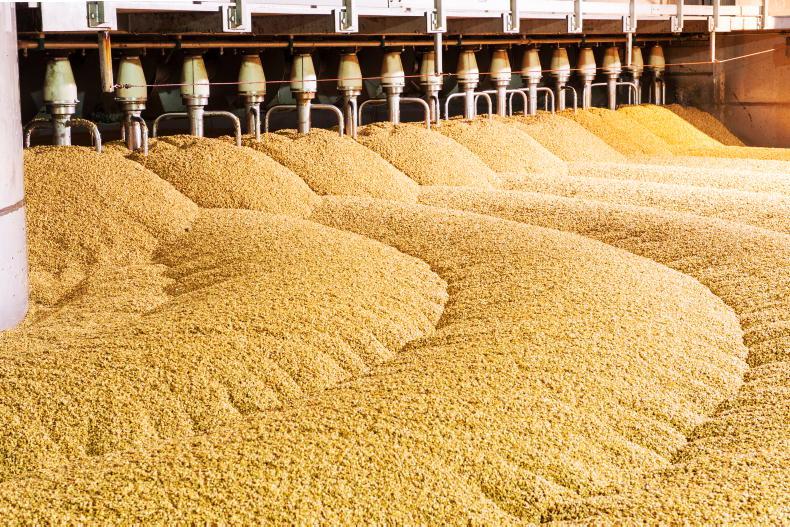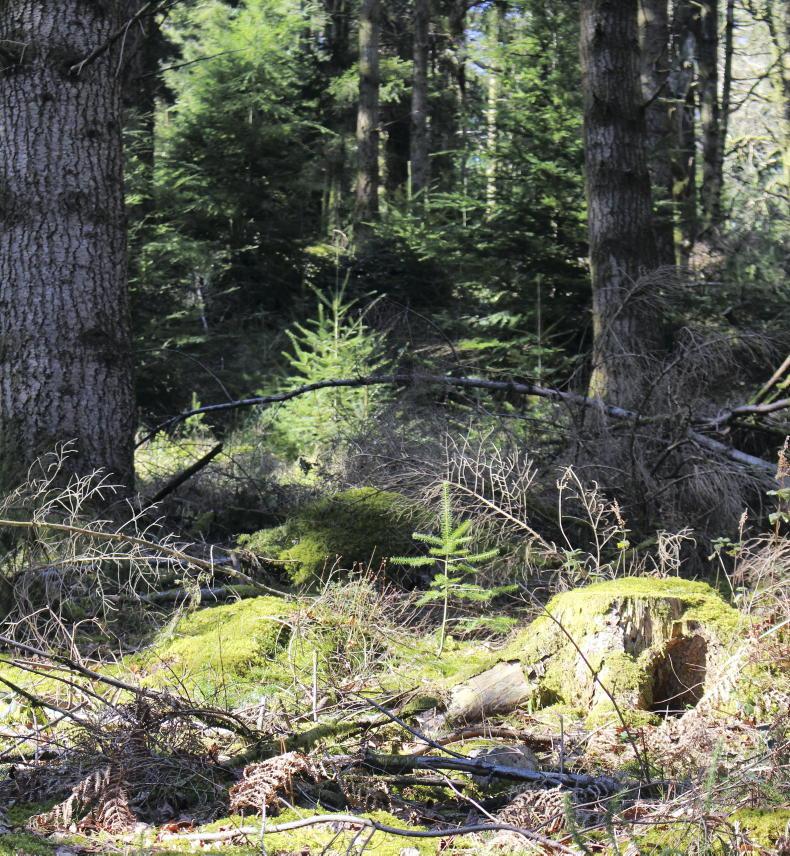Understanding and measuring carbon flux – the exchange of carbon between sources and sinks – has become a critical concern for Irish farmers.
Ireland, like the rest of the world, is striving to reduce emissions and sequester more carbon. Nationally, we’ve committed to a 30% reduction in agricultural greenhouse gas (GHG) emissions by 2030, with 5.6% of this achievable through carbon sequestration.
Carbon markets, where carbon credits can be bought or sold, are also rapidly emerging at EU level.
Just last week, Irish MEPs voted in favor of an EU carbon removal certification framework. This framework could enable farmers to generate future income by storing carbon in, for instance, healthy hedgerows, woodlands and soils.
Moreover, carbon stored in soils helps to maintain healthy soil structures, provide nutrients for crops, and regulate water retention, all of which can boost soil productivity and have associated long-term economic benefits.
As such, soil carbon is increasingly being recognised as a valuable asset on Irish farms. However, challenges persist in its accurate measurement.
The gold standard
The gold standard for measuring soil organic carbon involves laboratory analysis of multiple soil samples taken in every field.
This method is costly and impractical at scale. It also provides only a point-in-time assessment of carbon stocks; it cannot account for the real-time fluctuations in carbon storage or release that may be associated with ongoing management practices on farms.
Carbon flux measurement
An innovative alternative to soil sampling is carbon flux measurement, whereby instruments mounted onto carbon flux towers continually monitor changes in carbon dioxide concentrations in the air above farmland.
The data derived from this method holds the potential to offer valuable insights into how agricultural practices, such as, for example, ploughing a field, could impact on carbon release or storage on farms in real time.
A network of 28 carbon flux towers is presently being established in Ireland (see Learn More box below). The data provided by this network is likely to be instrumental in terms of laying the groundwork for a comprehensive national carbon farming framework.
Persistent challenges
However, despite the promise of this method, challenges remain in terms of the accurate interpretation of the large data sets or ‘big data’ recorded by the instruments mounted on carbon flux towers.
In particular, factors like wind direction, soil type, changes in management practices and other environmental influences make it challenging to accurately extrapolate results from a specific tower test site to the broader Irish landscape.
Consequently, the widespread measurement of carbon flux on Irish farms remains an ongoing effort, with all data currently considered preliminary.
Measuring carbon flux on
Footprint Farms
To showcase the future potential of carbon flux measurement for Irish farmers, the Footprint Farmers programme is working with Dublin-based tech company, CarbonSpace.
CarbonSpace is using a combination of data from a global network of carbon flux towers (Fluxnet), satellite imagery and weather stations to provide insights into sequestration rates on our eight Footprint Farms at the level of individual fields.

Preliminary results provided by Dublin-based tech company CarbonSpace demonstrate total storage (blue bars) and release (red bars) of carbon (tonnes CO2) on productive areas of Tullamore Farm each month since management was taken over by the Irish Farmers Journal in 2017.
The above graph displays preliminary results from Tullamore Farm, indicating that more carbon is being stored in productive areas than is being released. These results also reveal seasonal trends, with the highest carbon storage rates occurring in the spring, closely aligning with grass growth patterns.
While further developments in data collection and analysis are necessary before we can confidently interpret this data with a high degree of accuracy, these results give an indication of the kind of carbon accounting we might expect to see on farms across Ireland over the coming years.
However, amidst the carbon storage hype on Irish farms, it’s crucial to remember that the primary contributors to emissions in agriculture are methane (65%) and nitrous oxide (35%), distinct from carbon dioxide (CO2), which primarily derives from the burning of fossil fuels.
While carbon sequestration has an important role to play on Irish farms, reducing emissions must remain the primary focus if we are to meet sectoral climate goals.
Top tips: five ways to build valuable soil carbon stores
Carbon is stored in soil when organic matter, such as root material, crop residues, dung and soil biota (the micro-organisms, plants and animals that live in the soil) naturally decompose.
Healthy soils, rich in microbes and organic matter, store more carbon.
1. Maintaining good ground cover will reduce loss of soil organic carbon (SOC) through erosion and by regulating soil moisture levels – drying soils can release more carbon.2. Including deep-rooting species in swards and crop rotations will help to store carbon at greater depths within the soil.3. Reducing or eliminating chemical inputs can boost soil microbe populations, which play a key role in carbon storage.4. Depending on the nutrient requirements of your soil, spreading soil amendments such as compost or well-composted manure, or incorporating straw, can directly add organic matter to the soil and therefore boost soil organic carbon.5. Research has shown that both reduced soil disturbance and organic farming can lead to better soil health, healthier populations of soil microbes and greater soil organic carbon.Learn more:
Ireland’s 28 new
carbon flux towers
In 2021, the Department of Agriculture, Food and the Marine (DAFM) funded a network of 28 new carbon flux towers, at a cost of €80,000 to €250,000 per tower.
To listen to a Signpost Series podcast on progress made to date on this project, click here.
Understanding and measuring carbon flux – the exchange of carbon between sources and sinks – has become a critical concern for Irish farmers.
Ireland, like the rest of the world, is striving to reduce emissions and sequester more carbon. Nationally, we’ve committed to a 30% reduction in agricultural greenhouse gas (GHG) emissions by 2030, with 5.6% of this achievable through carbon sequestration.
Carbon markets, where carbon credits can be bought or sold, are also rapidly emerging at EU level.
Just last week, Irish MEPs voted in favor of an EU carbon removal certification framework. This framework could enable farmers to generate future income by storing carbon in, for instance, healthy hedgerows, woodlands and soils.
Moreover, carbon stored in soils helps to maintain healthy soil structures, provide nutrients for crops, and regulate water retention, all of which can boost soil productivity and have associated long-term economic benefits.
As such, soil carbon is increasingly being recognised as a valuable asset on Irish farms. However, challenges persist in its accurate measurement.
The gold standard
The gold standard for measuring soil organic carbon involves laboratory analysis of multiple soil samples taken in every field.
This method is costly and impractical at scale. It also provides only a point-in-time assessment of carbon stocks; it cannot account for the real-time fluctuations in carbon storage or release that may be associated with ongoing management practices on farms.
Carbon flux measurement
An innovative alternative to soil sampling is carbon flux measurement, whereby instruments mounted onto carbon flux towers continually monitor changes in carbon dioxide concentrations in the air above farmland.
The data derived from this method holds the potential to offer valuable insights into how agricultural practices, such as, for example, ploughing a field, could impact on carbon release or storage on farms in real time.
A network of 28 carbon flux towers is presently being established in Ireland (see Learn More box below). The data provided by this network is likely to be instrumental in terms of laying the groundwork for a comprehensive national carbon farming framework.
Persistent challenges
However, despite the promise of this method, challenges remain in terms of the accurate interpretation of the large data sets or ‘big data’ recorded by the instruments mounted on carbon flux towers.
In particular, factors like wind direction, soil type, changes in management practices and other environmental influences make it challenging to accurately extrapolate results from a specific tower test site to the broader Irish landscape.
Consequently, the widespread measurement of carbon flux on Irish farms remains an ongoing effort, with all data currently considered preliminary.
Measuring carbon flux on
Footprint Farms
To showcase the future potential of carbon flux measurement for Irish farmers, the Footprint Farmers programme is working with Dublin-based tech company, CarbonSpace.
CarbonSpace is using a combination of data from a global network of carbon flux towers (Fluxnet), satellite imagery and weather stations to provide insights into sequestration rates on our eight Footprint Farms at the level of individual fields.

Preliminary results provided by Dublin-based tech company CarbonSpace demonstrate total storage (blue bars) and release (red bars) of carbon (tonnes CO2) on productive areas of Tullamore Farm each month since management was taken over by the Irish Farmers Journal in 2017.
The above graph displays preliminary results from Tullamore Farm, indicating that more carbon is being stored in productive areas than is being released. These results also reveal seasonal trends, with the highest carbon storage rates occurring in the spring, closely aligning with grass growth patterns.
While further developments in data collection and analysis are necessary before we can confidently interpret this data with a high degree of accuracy, these results give an indication of the kind of carbon accounting we might expect to see on farms across Ireland over the coming years.
However, amidst the carbon storage hype on Irish farms, it’s crucial to remember that the primary contributors to emissions in agriculture are methane (65%) and nitrous oxide (35%), distinct from carbon dioxide (CO2), which primarily derives from the burning of fossil fuels.
While carbon sequestration has an important role to play on Irish farms, reducing emissions must remain the primary focus if we are to meet sectoral climate goals.
Top tips: five ways to build valuable soil carbon stores
Carbon is stored in soil when organic matter, such as root material, crop residues, dung and soil biota (the micro-organisms, plants and animals that live in the soil) naturally decompose.
Healthy soils, rich in microbes and organic matter, store more carbon.
1. Maintaining good ground cover will reduce loss of soil organic carbon (SOC) through erosion and by regulating soil moisture levels – drying soils can release more carbon.2. Including deep-rooting species in swards and crop rotations will help to store carbon at greater depths within the soil.3. Reducing or eliminating chemical inputs can boost soil microbe populations, which play a key role in carbon storage.4. Depending on the nutrient requirements of your soil, spreading soil amendments such as compost or well-composted manure, or incorporating straw, can directly add organic matter to the soil and therefore boost soil organic carbon.5. Research has shown that both reduced soil disturbance and organic farming can lead to better soil health, healthier populations of soil microbes and greater soil organic carbon.Learn more:
Ireland’s 28 new
carbon flux towers
In 2021, the Department of Agriculture, Food and the Marine (DAFM) funded a network of 28 new carbon flux towers, at a cost of €80,000 to €250,000 per tower.
To listen to a Signpost Series podcast on progress made to date on this project, click here.










SHARING OPTIONS